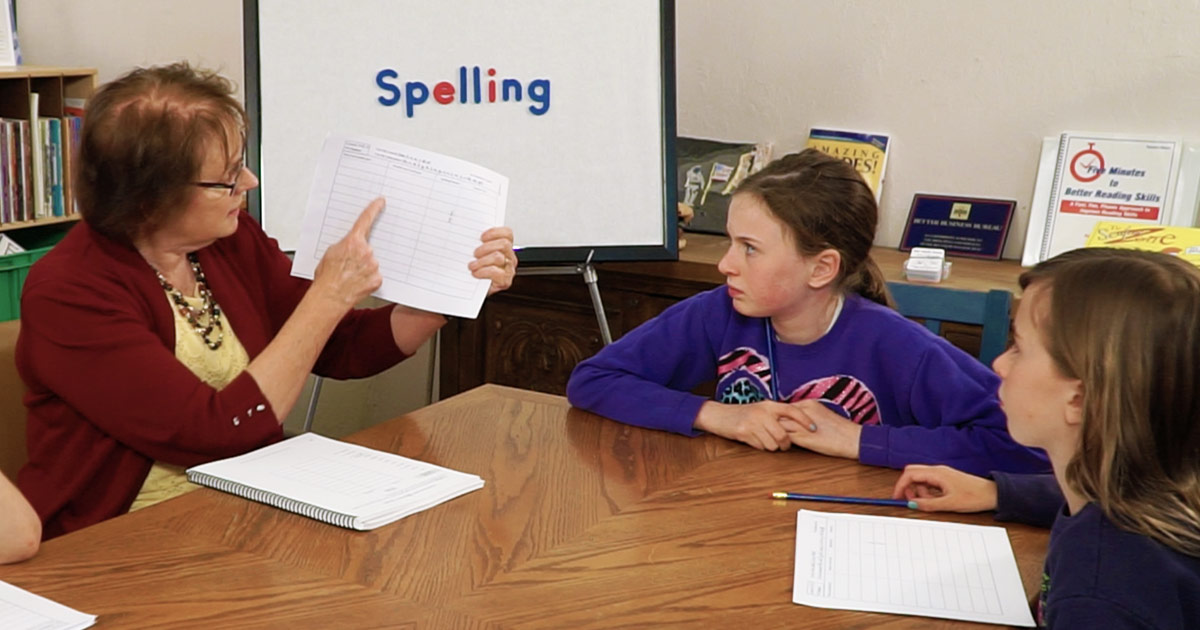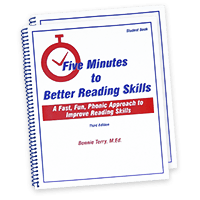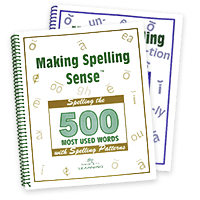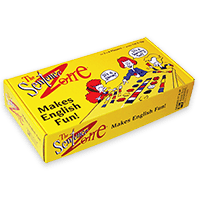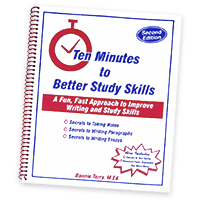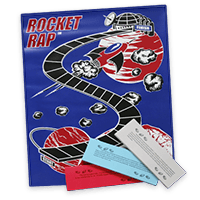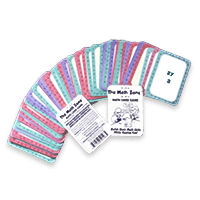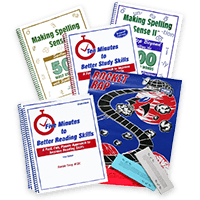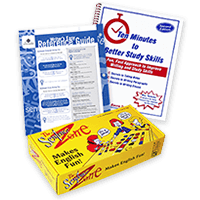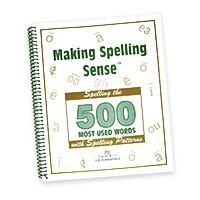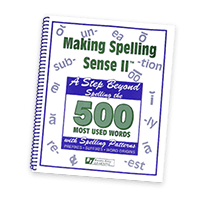Spelling Activities Solve Spelling Problems
January 17th, 2017[vc_row][vc_column width=”3/4″][vc_column_text]Two different systems impact your ability to spell, the auditory and visual systems. If these systems are not working as well as they should be, you are likely to have spelling problems. If you hear a word that you haven’t seen multiple times and need to spell it, you will typically rely on spelling it by sounding it out. The process of sounding a word out relies on several areas of auditory processing. If you’ve seen a word multiple times and need to spell it, you will more often make a picture in your mind of what the word looks like and then you are able to spell it. There are many spelling activities you can easily do that will improve your ability to spell.
How Auditory Discrimination Impacts Spelling Problems
Typically, kids that have trouble with spelling may have one or more areas of auditory processing that isn’t working as efficiently as it should. For instance, they may have an auditory discrimination difficulty. Auditory discrimination is the ability to discriminate between words that are similar or different in the way they sound e.g.: mob and mop; very and berry; scream and stream; mesh and mush.[/vc_column_text][/vc_column][vc_column width=”1/4″][vc_single_image image=”10883″ img_size=”full” onclick=”custom_link” img_link_target=”_blank” link=”https://www.pinterest.com/pin/459930180679571575/”][/vc_column][/vc_row][vc_row][vc_column][vc_column_text]This problem impacted my daughter. She has trouble discriminating the individual sounds in a word. She often came home in tears week after week on spelling test day after getting low marks. She may have inherited her spelling problems from her father. I recall her father bringing his handwritten papers to me in college and asking me to type them up. His spelling was so bad I often had to guess at the word he wanted.
Another auditory processing difficulty that affects spelling is auditory-visual integration. This is the ability to accurately relate an auditory sound with a visual symbol. This is a beginning reading skills in the areas of phonemic awareness and phonics.
Auditory-closure is another auditory processing area that affects spelling. This is the ability to combine sounds that are presented orally to make words. For instance, when given the individual sounds: ‘c’, ‘a’, and ‘t’; auditory closure is the ability to bring those individual sounds together to make the word ‘cat’. It is also the ability to ‘fill in’ the missing piece of a word. For example, if I were to say ‘po _a to’, you would be able to fill in the missing ‘t’ and say ‘potato’.
Spelling Activities to Solve Spelling Problems
To solve spelling problems, you need to be sure your spelling program includes an auditory component. Including an auditory component strengthens the auditory system and makes spelling easier.
You can also play games like:
- “I’m thinking of a word that begins with the ‘b’ sound. Give the sound, not the letter. Can you kids guess the word?
- How many words can they think of that begin with a particular sound?
- How many words can they think of that end with a particular sound?
- How many words can they think of that rhyme with the word cat? bake? think? sing?
Ultimately, using a spelling program that has an auditory component as a foundational aspect of the program is critical to building lifelong spelling skills.[/vc_column_text][vc_column_text]
The Structure of the English Language
In the English language, we only put letters together 8 ways. We call them the 8 spelling patterns. Multi-syllable words are just combinations of the eight patterns. For example, the word ‘can’ is the vowel-consonant pattern (vc). These are the short vowel words.
An excerpt from lesson one of Making Spelling Sense
When you have a word in the Vowel-Consonant Pattern (vc), you have one vowel, next to a consonant. The vowel gives its short sound. You can also refer to the short sound as its nickname since a vowel usually gives either its name sound (long sound) or its nickname (short sound).
* Remember, the vowel patterns start at the first vowel in each word part (syllable). You can have zero, one, two, or three beginning sounds for each syllable, then the vowel pattern. For example, in the word ‘in’ there is no beginning consonant. The vowel-consonant pattern starts immediately. In the word ‘cap’, ‘c’ is the beginning sound and ‘ap’ constructs the vowel-consonant pattern (vc). In the word ‘trap’, ‘tr’ create the beginning sounds and the ending letters ‘ap’ construct the vowel-consonant pattern (vc). In the word ‘strap’, ‘str’ are the beginning sounds and ‘ap’ constructs the vowel-consonant pattern (vc).
Spelling Activities Built Into a Spelling Program
You can address auditory process skills and visual processing skills at the same time as improving spelling skills with our Awaken the Scholar Within Spelling and Phonics Program which includes the Making Spelling Sense and Making Spelling Sense II books. In the ASW Spelling and Phonics Program, Bonnie Terry teaches you step-by-step with video lessons. It also includes application lessons. The system used in these books combine auditory processing activities with visual processing and word structure. The phonics portion of the book pulls together the skills you learn with improving reading fluency.
[/vc_column_text][/vc_column][vc_column][/vc_column][/vc_row]







